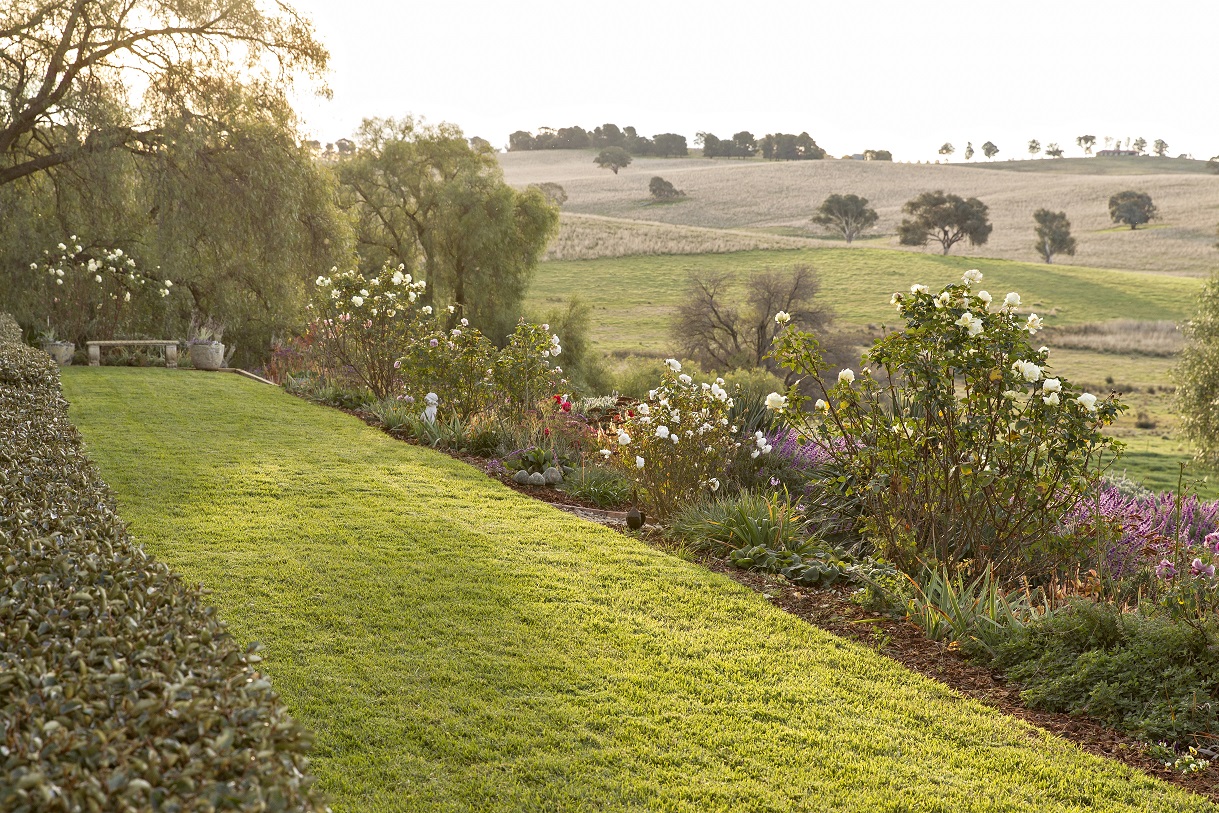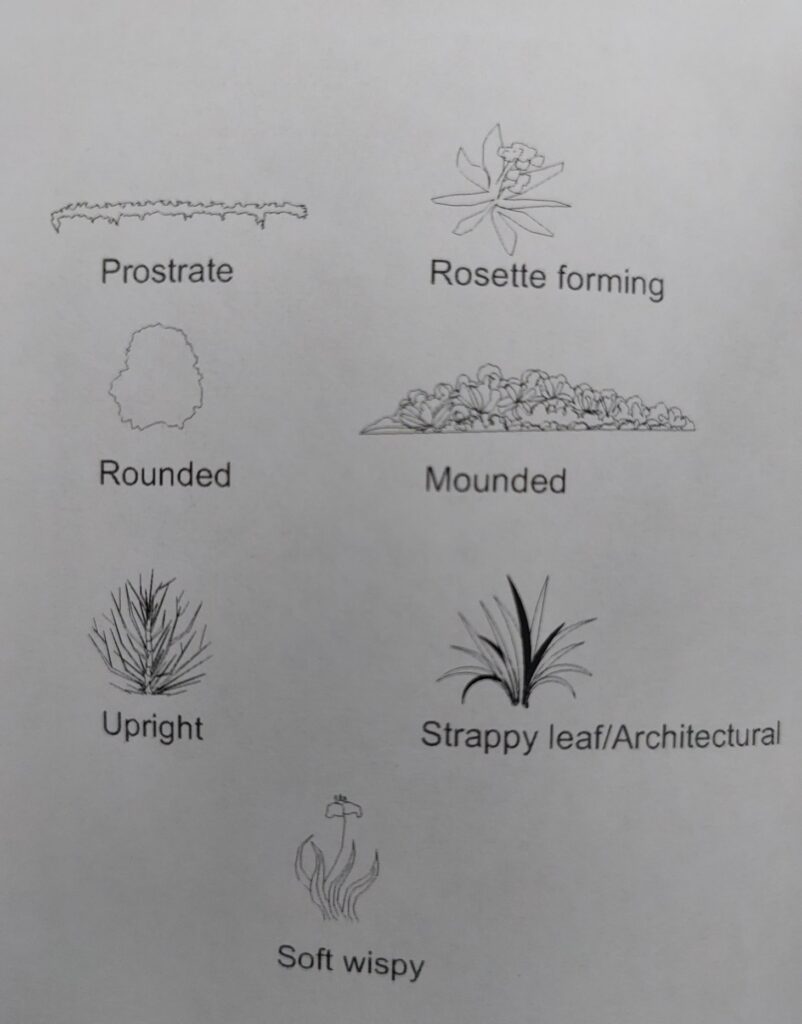
12 Jun Planting with Purpose
Continuing on with the Planting Season Series from last month. Once you have identified what the conditions of your site are. You can start making decisions on what plants you use. When it comes to combining plants, I tend to look at plants as all different shaped building blocks –
I first think of the conditions within the garden so I can have a clear list in my head of the plants that will survive the location. Then I think about what purpose do the plants need to fill. For example, does it need to screen out a neighbor or border a pathway. I then consider their overall shape or the block shape they will form. In general, I will group shrubs or perennials into seven different forms or shaped blocks (see diagram below) They are;
– prostrate ground covers say like myoporum
– soft rounded mounds like catnip
– rosette forming from the base like statice
– rounded bun shaped plants like salvias or lavenders or other plants that can be pruned to form this shape like teucrium
– strappy leaf or architectural shaped plants in varying heights from lomandra, agapanthus and ornamental grasses,
– softer shaped more ephemeral plants that I tend to look as seasonal fillers like butterfly bush
– Then upright branching shrubs like bush roses.
Continuing from there of course you have the climbers, larger shrubs and trees that all have their own form and different habits again.
Depending on the size of the garden I will select a few of these different building blocks to use together. Always considering first their foliage colour, foliage shape, foliage texture and foliage size then their mature height/widths and thirdly their flowering colour and the time that they flower. It is combining these building blocks in a way so that they give you the overall aesthetic feel that you want. You need to always consider their mature width and height when combining the plants so that they don’t outgrow each other. I love using a combination where the foliage really contrasts for example, a dark green rounded leaved plant with a soft silvery feathery shaped leaved plant, and a mid-green strappy leaved planted.



